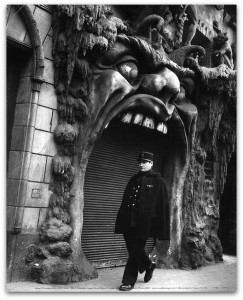We recently told you about some of the world’s scariest bars. While those may remind you of the dead, these dearly departed watering holes around the world are, sadly, truly and completely dead.

This hell-themed bar was one of the hippest in Paris at the turn of the century. The exterior, which featured nightmarish decor and a door shaped like the head of a demon, still appears on postcards in many of the city’s gift shops. Inside, elaborate stage shows featured live snakes and an actor running around in a devil outfit who heckled the patrons. Despite the fiery ambiance, which included smoke and flame effects, the management often fought with the bar’s heating system. Result: It was often too cold to hang out in the bar that looked like Hell. Cabaret de l’Enfer was so popular that it inspired a heavenly bar next door called Cabaret du Ciel. It featured waitresses in angel outfits and an actor dressed as Saint Peter. Sadly, both of them went to the big lounge in the sky by the 1950s.
The Stone Balloon (Newark, Delaware)
This bar was once beloved by students at the University of Delaware and was known for its live music. Bruce Springsteen and Metallica both played sets there and MTV even used it for a broadcast during the network’s early days. What made the Stone Balloon so popular? During its 33 years in business, it sold over 20,000 mugs that could be filled with beer on Thursdays for only a buck a round. Needless to say, the bar was once one of Budweiser’s largest accounts in America. Rolling Stone once called the Stone Balloon “the best kept secret in rock and roll.” Alas, it closed forever in 2005 and was replaced by condos.
Peter Cat (Tokyo)
Before he hit it big as a writer, acclaimed novelist Haruki Murakami once ran a coffeehouse and jazz bar with his wife in Tokyo’s Shibuya District. They named it after his old pet cat, Peter. Murakami, who used the business to pay his bills while he worked on a writing career, didn’t have high hopes that it would be successful. Instead, their somewhat unusual business scheme (serve coffee during the day, serve booze at night) worked out pretty well. Peter Cat was often, literally, packed. The tiny space featured a grand piano and barely enough room for both patrons and the bands that played music there. They eventually moved Peter Cat to a larger location. Murakami and his wife added a Cheshire Cat sign outside and lots of purr-fect decorations inside. They closed Peter Cat for good in 1981 when Murakami started to gain notice as one of the finest contemporary novelists.







